Elymus sibiricus
Species Introduction
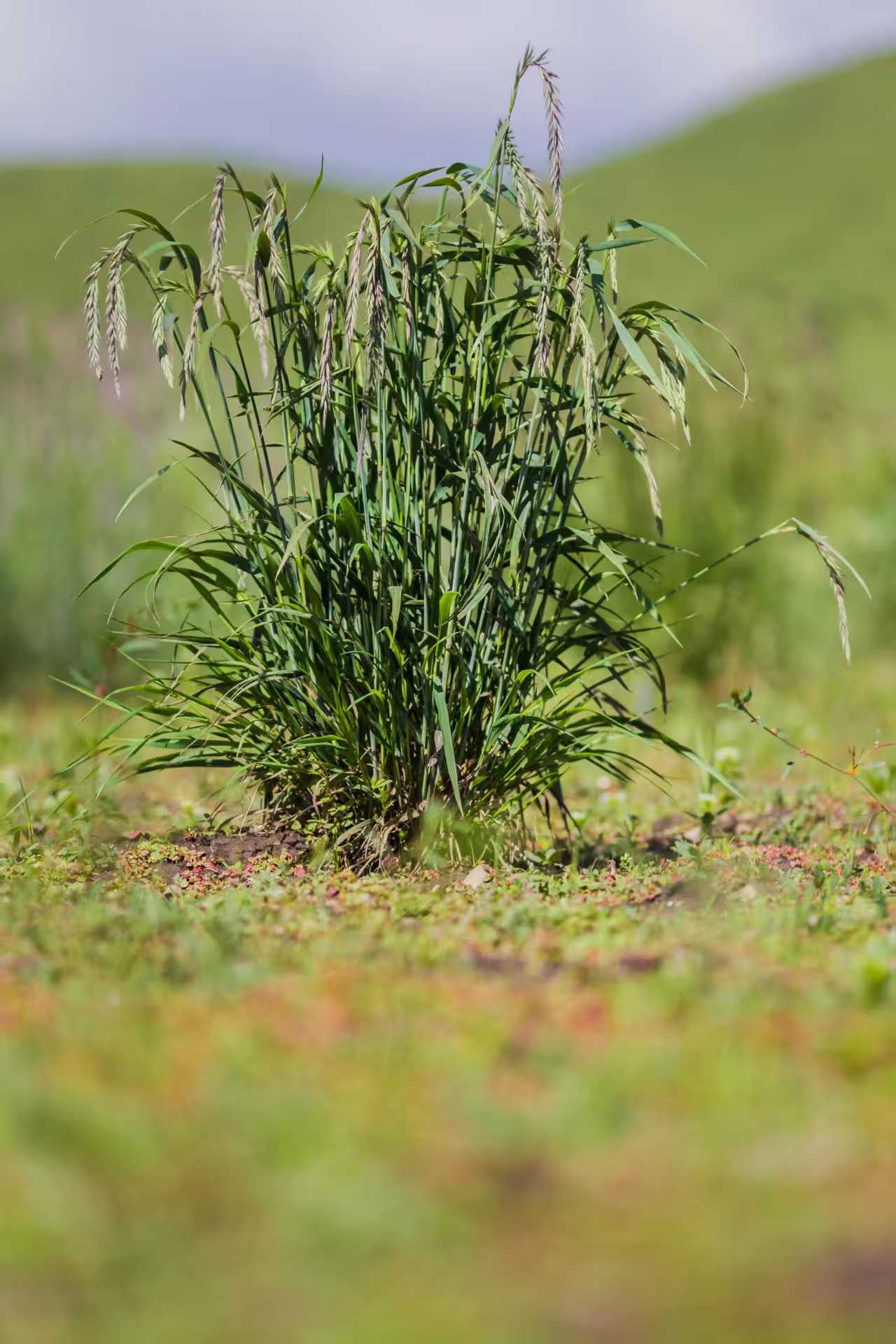
Elymus sibiricus is an allotetraploid perennial grass (StStHH, 2n = 4x = 28) indigenous to the Qinghai-Tibetan Plateau (QTP) and widely distributed across Eurasia. It is characterized by solitary or sparsely clustered stems and a relatively loose, drooping spike-like inflorescence. As a dominant species in grassland communities at elevations of 1,000–4,000 meters, it exhibits exceptional tolerance to cold, drought, and saline-alkali stresses, supported by a well-developed root system. Valued for its high yield, superior crude protein content, and palatability, E. sibiricus serves as both a key ecological stabilizer in fragile alpine ecosystems and an ideal forage for large-scale pasture restoration and sustainable livestock production on the QTP.
More »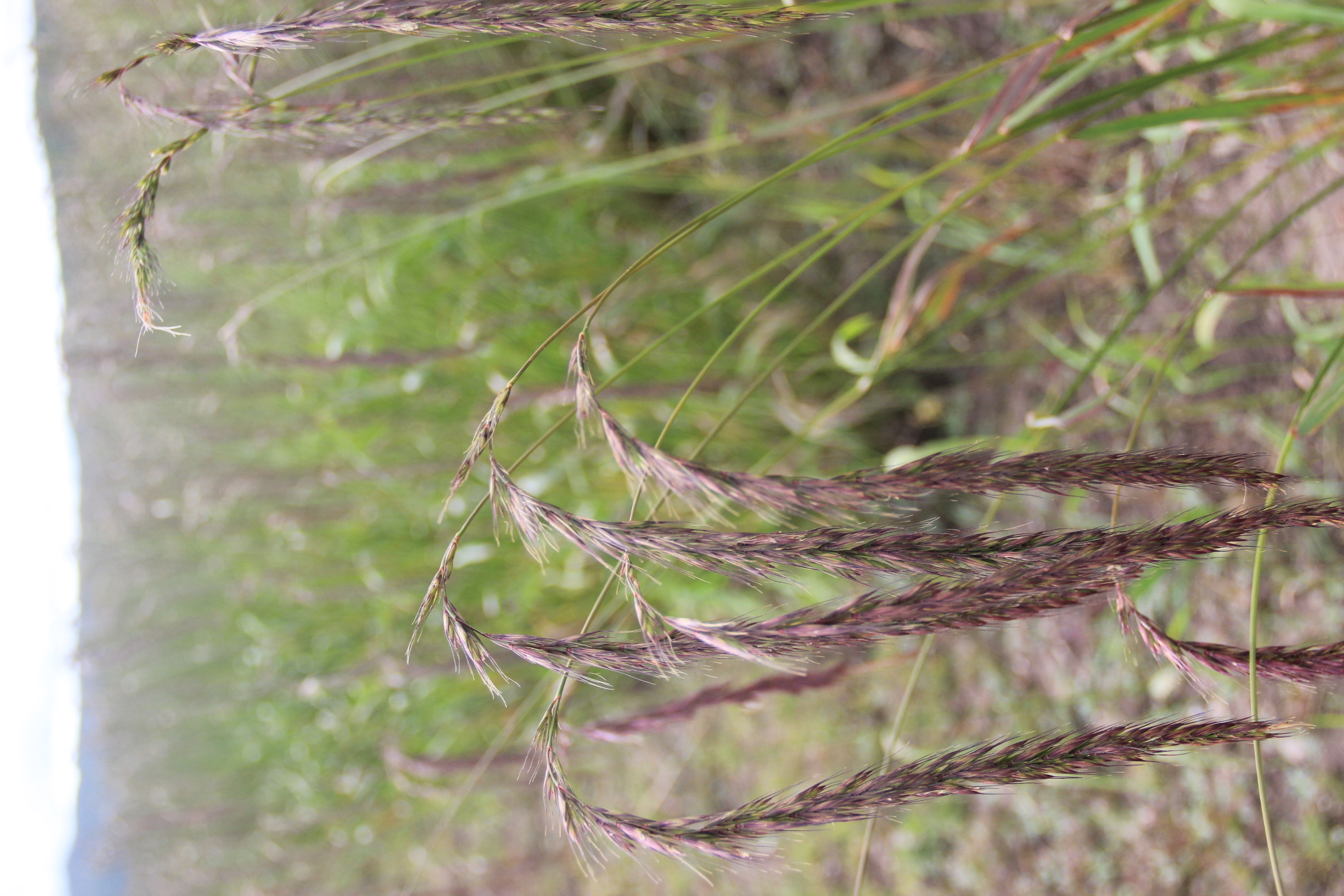
Elymus nutans
Elymus nutans is a perennial herbaceous grass (Poaceae) and an ecologically significant forage species native to the Qinghai-Tibetan Plateau. It is cytogenetically characterized as an allohexaploid (2n = 6x = 42) with the genomic constitution StStHHYY. The species demonstrates strong adaptability to environmental stresses, including cold, drought, and marginal soils, supported by a deep root system that enhances soil stabilization. Valued for its high nutritional content, good palatability, and robust yield, E. nutans also exhibits considerable genetic diversity, which underpins its resilience to climate variability and makes it a key species for grassland restoration and sustainable livestock production in alpine regions.
More »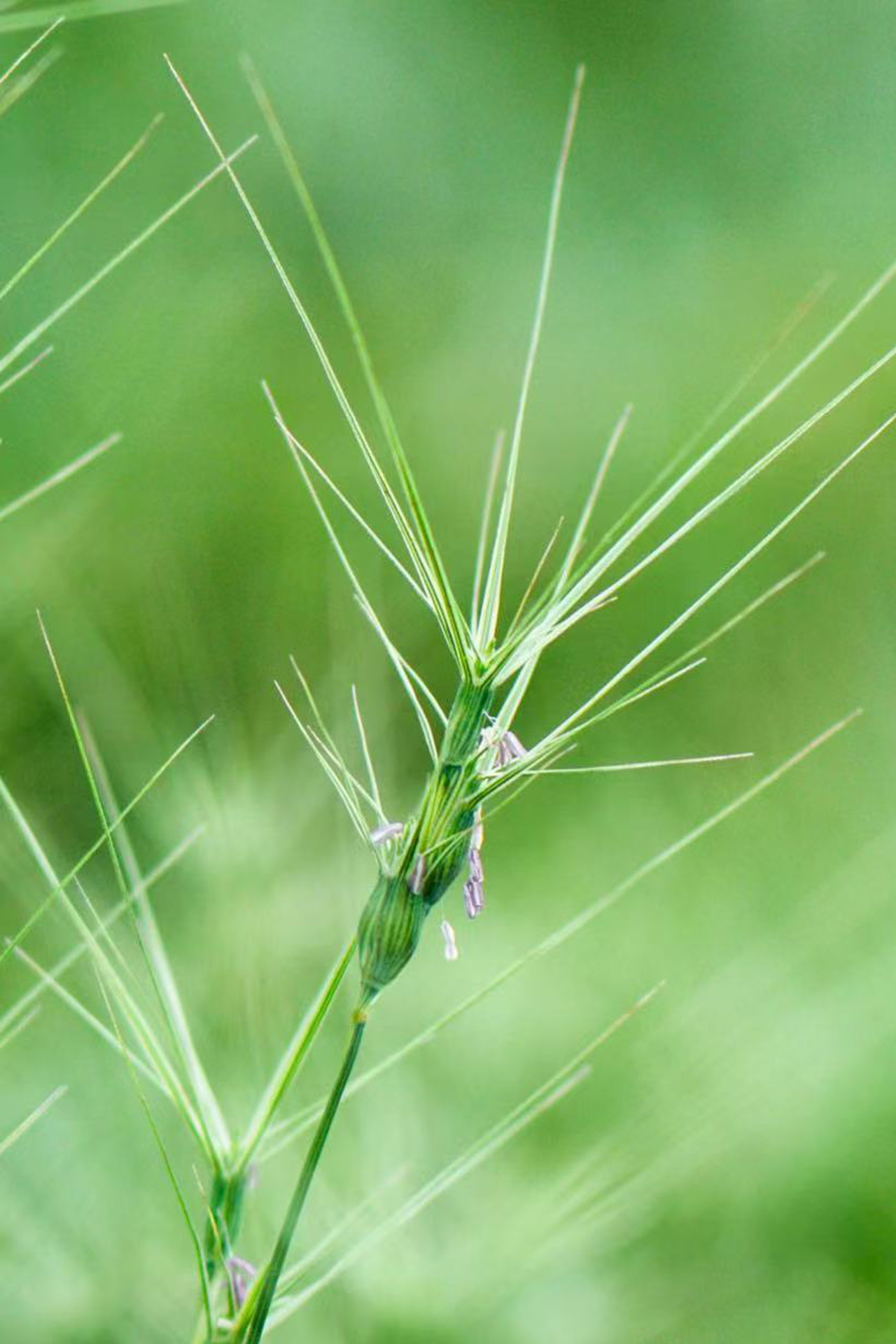
Aegilops biuncialis
Aegilops biuncialis (two-awned goatgrass) is an annual grass species native to the Mediterranean region and West Asia, extending its distribution to parts of the Qinghai-Tibetan Plateau (QTP) in dry, rocky slopes and disturbed grasslands. It is characterized by its slender spikes bearing two prominent awns per spikelet, giving the inflorescence a distinctly bristled appearance. As an allotetraploid (2n = 4x = 28, UbUbMbMb), it exhibits strong drought tolerance and adaptability to nutrient-poor, calcareous soils. On the QTP, it functions both as a potential genetic resource for wheat improvement, contributing genes for abiotic stress tolerance, and as a component of native grassland communities in semi-arid areas. Its ecological role and genomic traits make it valuable for research on cereal adaptation and grassland ecosystem dynamics in high-altitude environments.
More »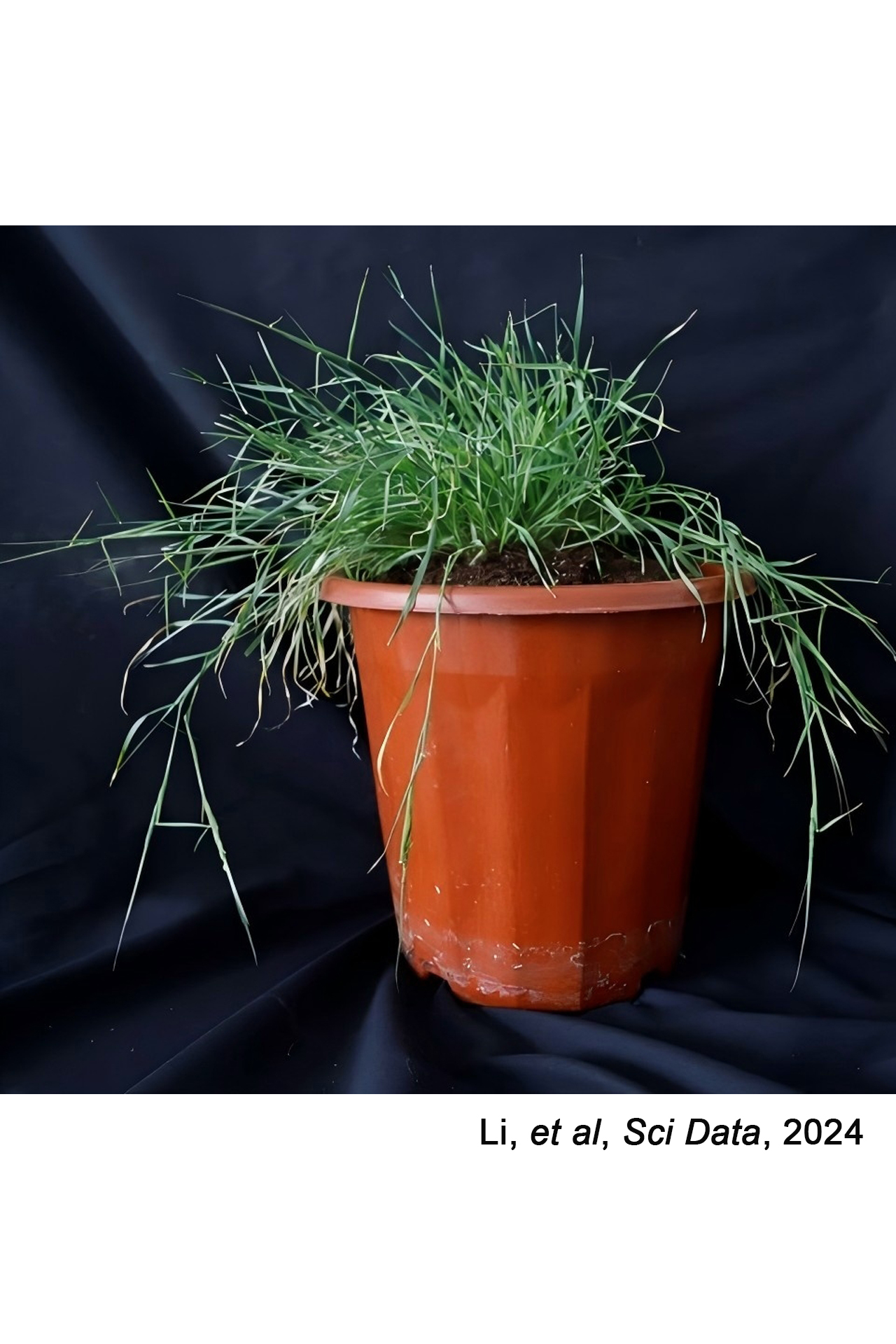
Aegilops comosa
Aegilops comosa, commonly known as barbed goatgrass, is a diploid wild grass (2n = 2x = 14, MM) native to the Mediterranean and Southwest Asia. Thriving in arid, rocky slopes and nutrient-poor soils, it exhibits excellent drought tolerance and adaptation to marginal environments. The species is distinguished by its slender, awned spikelets and tufted growth form. As a wild relative of wheat, it represents a valuable genetic resource for improving stress resilience and disease resistance in cereals. These traits, along with its available genome sequence, highlight its significance in evolutionary research and wheat breeding.
More »
Aegilops tauschii
Aegilops tauschii (2n = 2x = 14, DD) is a diploid wild goatgrass native to a vast region spanning from East Turkey to China and West Pakistan. It is the D-genome progenitor of hexaploid bread wheat (Triticum aestivum, AABBDD) and represents a vital genetic reservoir for improving wheat agronomic performance and stress resilience. Originally introduced as fodder, its strong drought tolerance and adaptability have enabled it to thrive as a common weed in arid farmlands and wheat fields. As the donor of the wheat D subgenome, Ae. tauschii remains a key genetic resource for wheat enhancement.
More »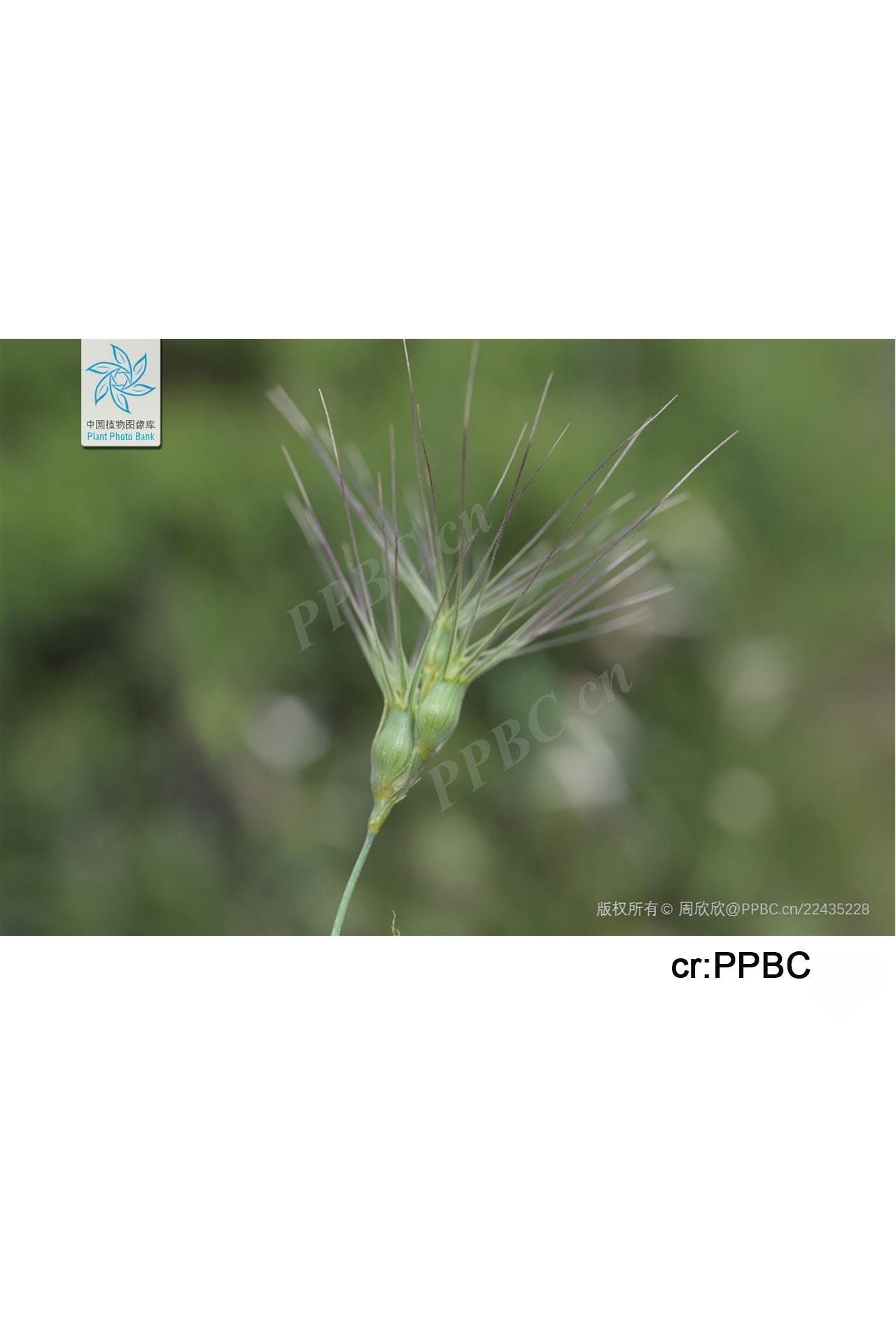
Aegilops triuncialis
Aegilops triuncialis (barbed goatgrass) is an annual grass species native to the Mediterranean Basin and Western Asia, with a widespread distribution that extends to the Qinghai-Tibetan Plateau (QTP) region, where it occurs in dry grasslands, rocky slopes, and disturbed habitats at elevations of 1,500–3,500 meters. The species is characterized by its tough, awned spikelets arranged in a narrow spike, each bearing stiff barbs that aid in seed dispersal. As an allotetraploid (2n = 4x = 28, CtCtUtUt), it exhibits strong drought tolerance and adaptability to nutrient-poor soils. On the QTP, it plays a dual role as a potential genetic resource for cereal improvement—contributing genes for abiotic stress tolerance—and as an invasive weed in overgrazed grasslands. Its ecological impact and genomic traits make it a species of both concern and value in high-altitude grassland management and wheat breeding programs.
More »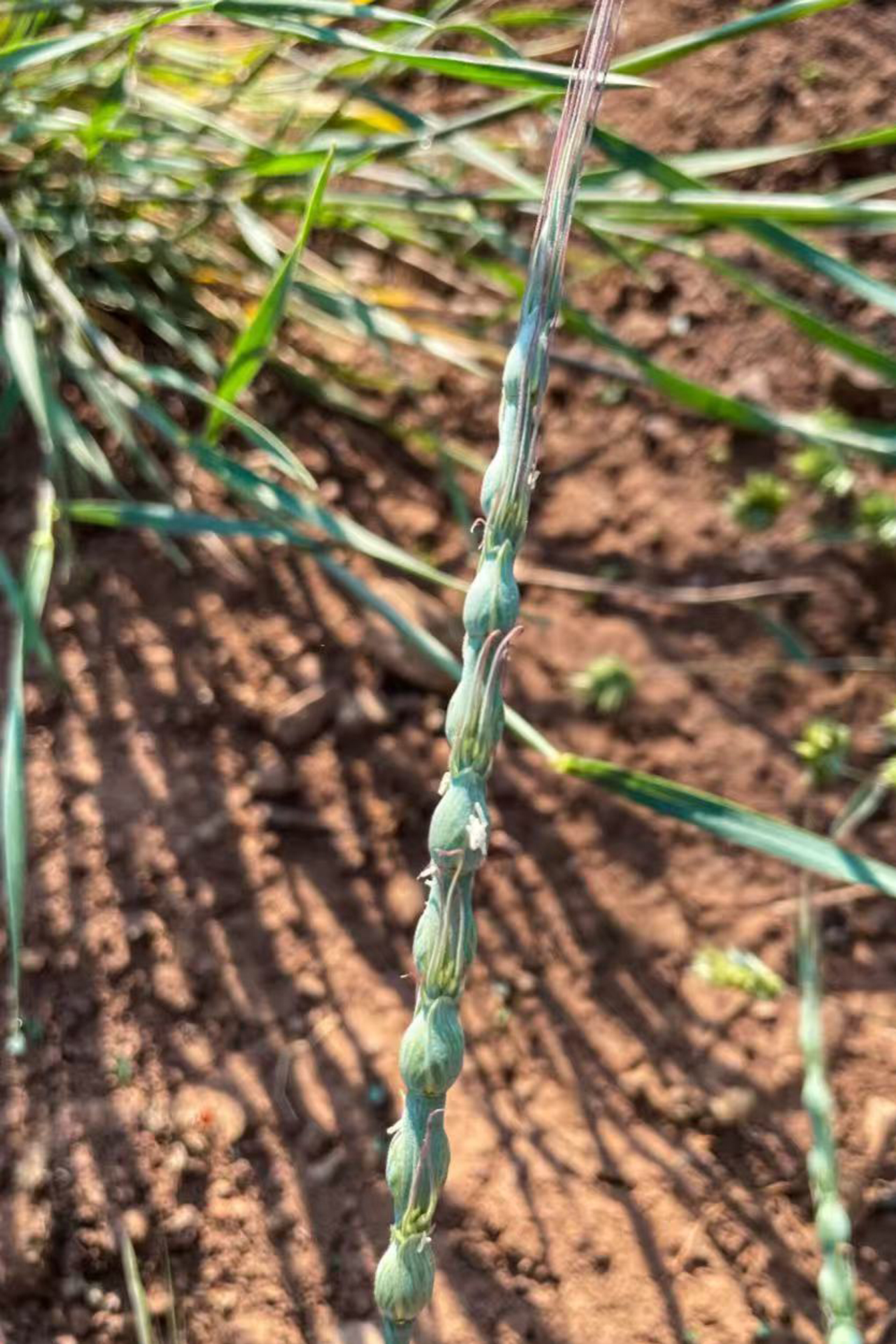
Aegilops ventricosa
Aegilops ventricosa, commonly known as barbed goatgrass, is an allotetraploid wild grass (2n = 4x = 28, genome DvDvNvNv) native to the Mediterranean region and surrounding arid areas. It typically grows in disturbed, rocky, and nutrient-poor soils, demonstrating strong adaptability to drought and low-fertility conditions. As a wild relative of wheat, it serves as an important genetic reservoir for improving cultivated cereals, contributing traits such as disease resistance and abiotic stress tolerance. The species is characterized by its barbed spikelets and deeply rooted growth habit, which also supports its potential use in soil stabilization in marginal environments. With a recently assembled high-quality reference genome, Ae. ventricosa has further emerged as a valuable model for studying polyploid genome evolution and facilitating gene discovery for wheat improvement.
More »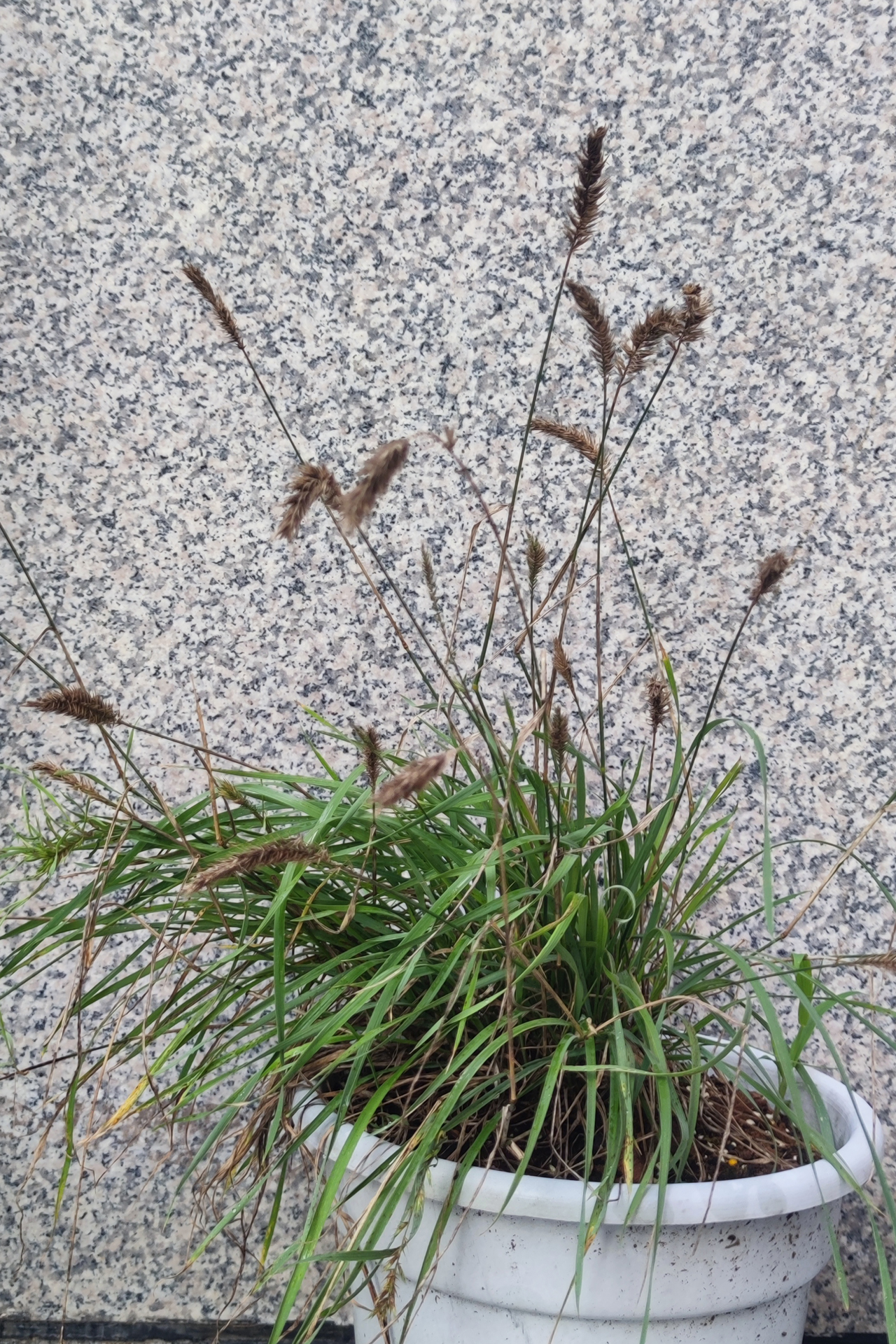
Agropyron cristatum
Agropyron cristatum (crested wheatgrass) is a perennial cool-season grass species native to the steppes of Eastern Europe and Central Asia, widely introduced in temperate regions worldwide. It is characterized by its distinctive flattened, comb-like spikes and dense tufted growth habit. As a tetraploid species (2n = 4x = 28, PPPP), it exhibits exceptional drought tolerance and strong adaptability to alkaline and low-fertility soils. As a high-quality forage resource, it significantly improves pasture productivity in degraded rangelands. Valued for its early-season growth and nutritional quality, A. cristatum plays a crucial role in soil conservation and sustainable pasture management, making it an important species for ecological restoration and livestock development in cold, arid regions.
More »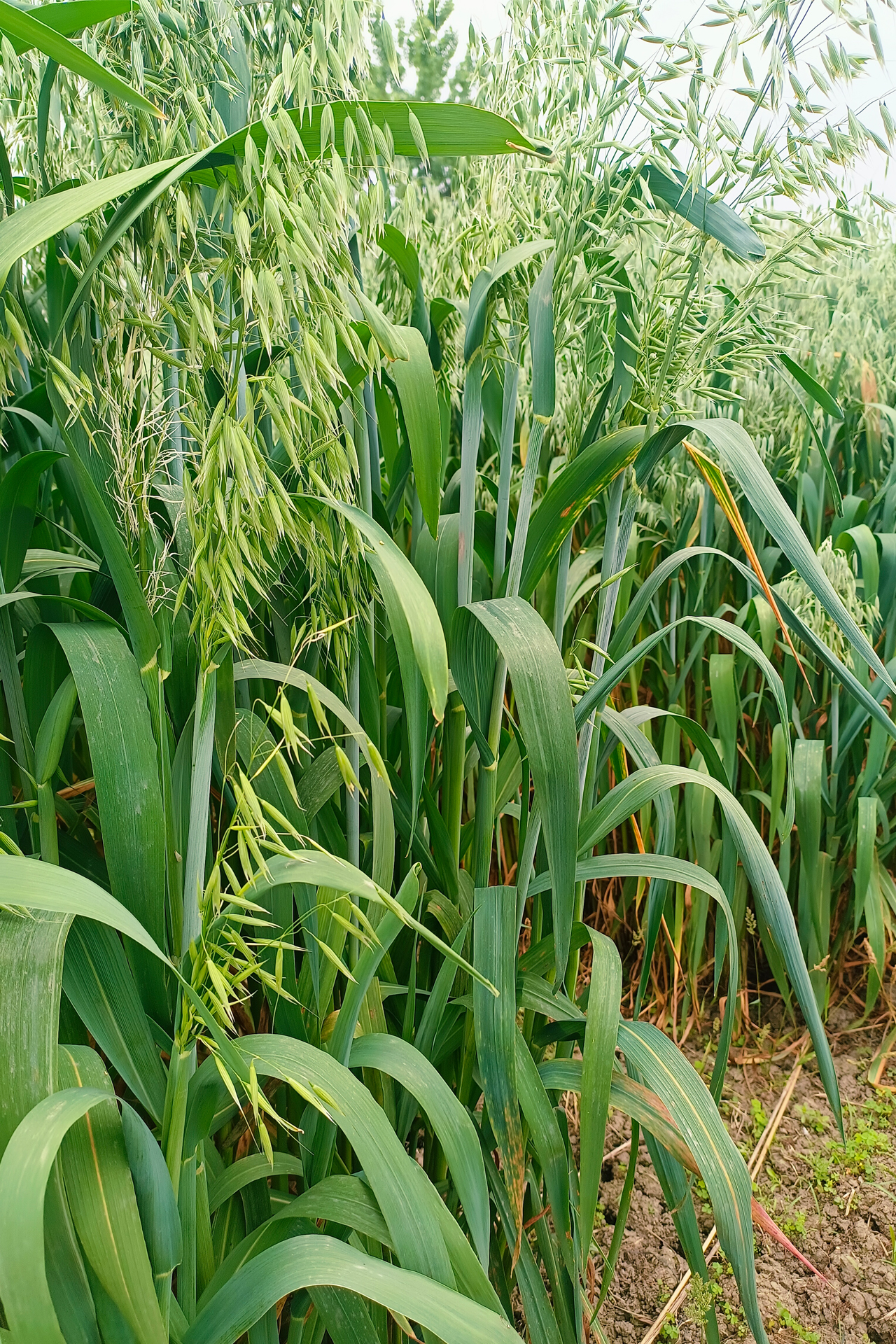
Avena sativa
Avena sativa (oat) is an annual herbaceous plant of the Poaceae family and a globally significant cereal crop. As a hexaploid species (2n = 6x = 42, AACCDD) with three distinct subgenomes derived from ancestral wild oats (A. sterilis and A. fatua), it exhibits strong adaptability to marginal environments. Ranked seventh in global cereal production, oats are valued worldwide as a nutritious food source, high-quality livestock feed, and for their soil-improving properties in sustainable cropping systems.
More »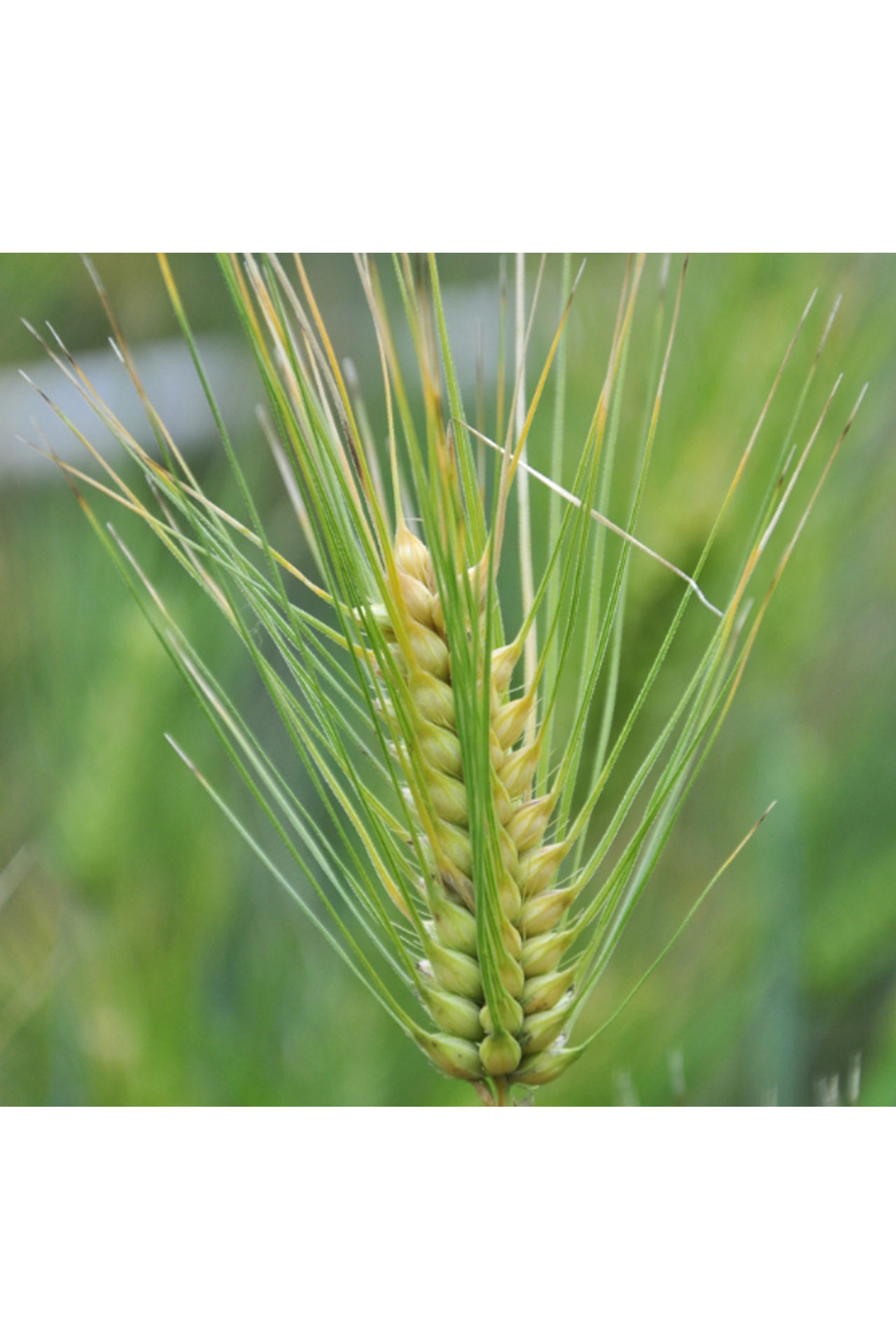
Hordeum brevisubulatum
Hordeum brevisubulatum (II, 2n = 2x = 14), commonly known as short-awned barley, is a perennial grass native to Central Asia, particularly Mongolia, China, and Siberia, where it thrives in saline-alkaline meadows and riparian zones. This species is highly valued for its exceptional tolerance to multiple abiotic stresses, including salinity, drought, and cold. Its dense, spike-like inflorescences with short-awned grains distinguish it morphologically from cultivated barley (H. vulgare). Ecologically, it contributes to soil stabilization, supports local biodiversity, and serves as a forage resource in marginal lands. Genetically, it represents a promising source of stress-resistance traits for barley improvement, underscoring its dual importance in ecological conservation and crop breeding.
More »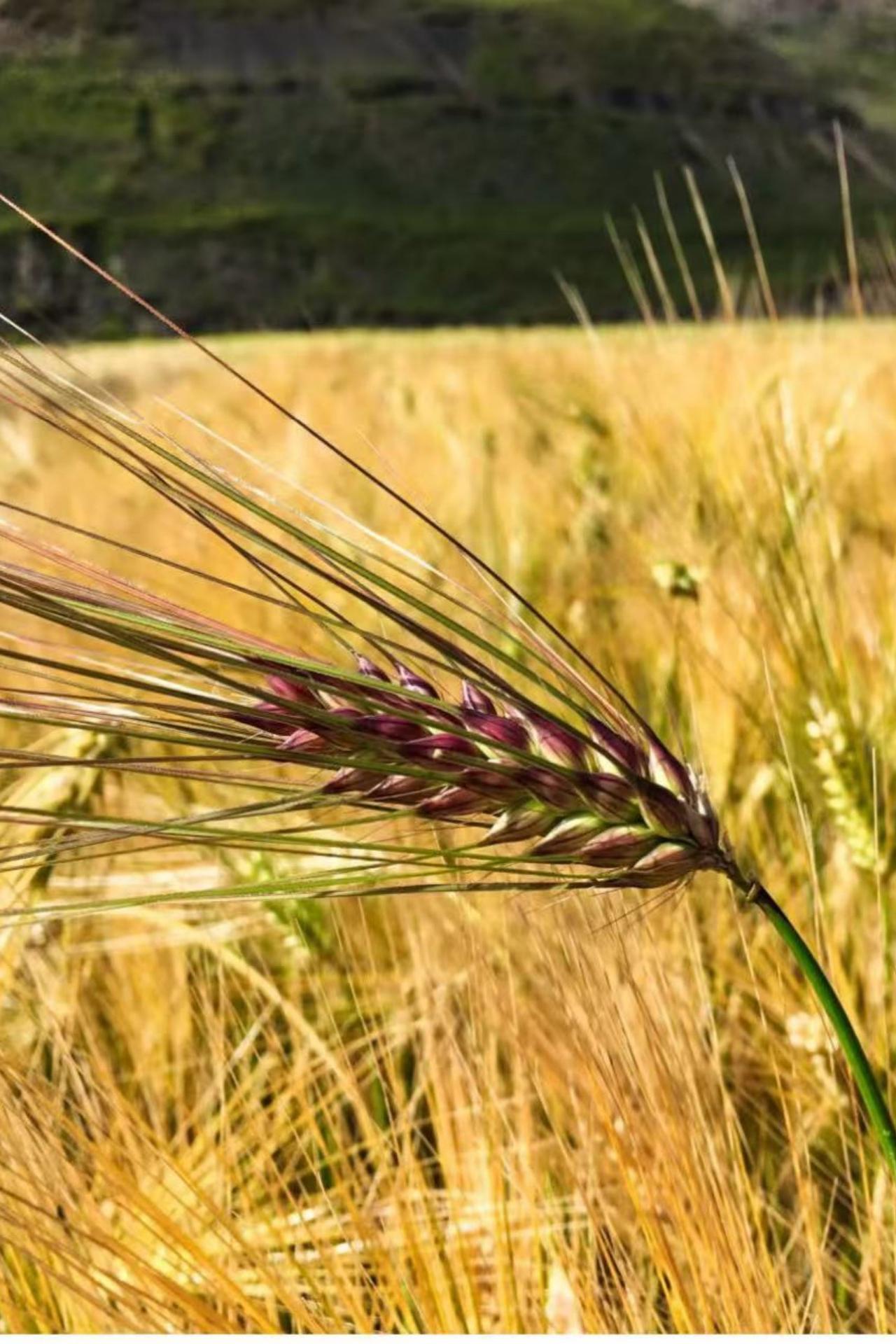
Hordeum vulgare
Hordeum vulgare (barley) is an annual diploid grass (2n = 2x = 14, HH) of the Poaceae family, possessing a large genome of approximately 5.1 Gb. As one of the world's oldest cultivated cereals, it has been integral to agriculture as a staple food, animal feed, and a key ingredient in brewing and distilling. Barley demonstrates broad adaptability, thriving in temperate, subarctic, and semi-arid regions, which underpins its global agricultural importance. In China, where its cultivation dates back to the mid-Neolithic period some five thousand years, it remains a principal crop.
More »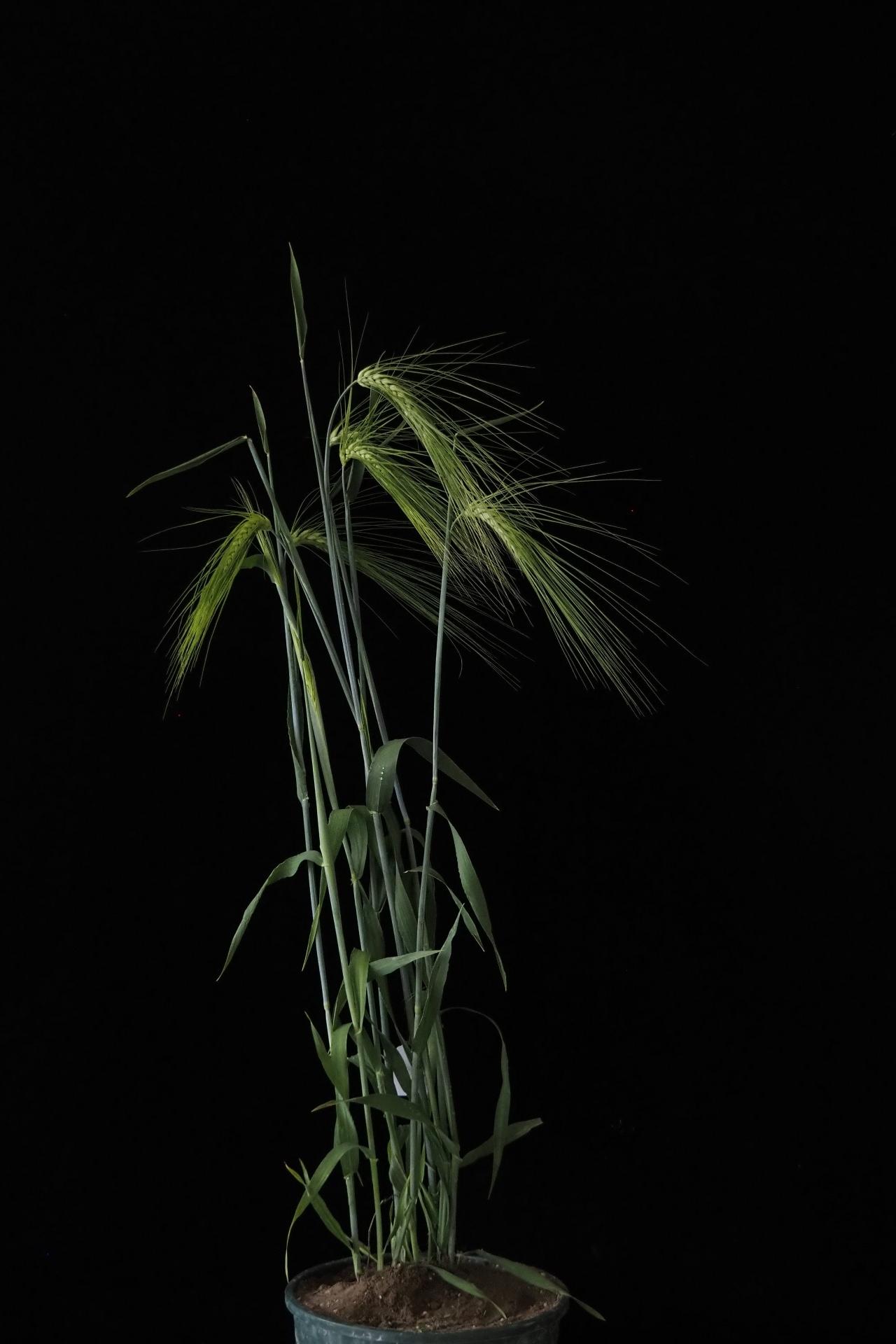
Hordeum vulgare var. nudum
Hordeum vulgare var. nudum (commonly known as qingke or hull-less barley) is an annual diploid grass (2n = 2x = 14, HH) with a genome size of approximately 4.5 Gb. Its hull-free grains lower processing requirements and enhance its suitability for traditional diets. Valued for its nutritional quality, processing ease, and resilience in harsh growing conditions, qingke serves as a staple food across the Tibetan Plateau, the Himalayas, and parts of East Asia.
More »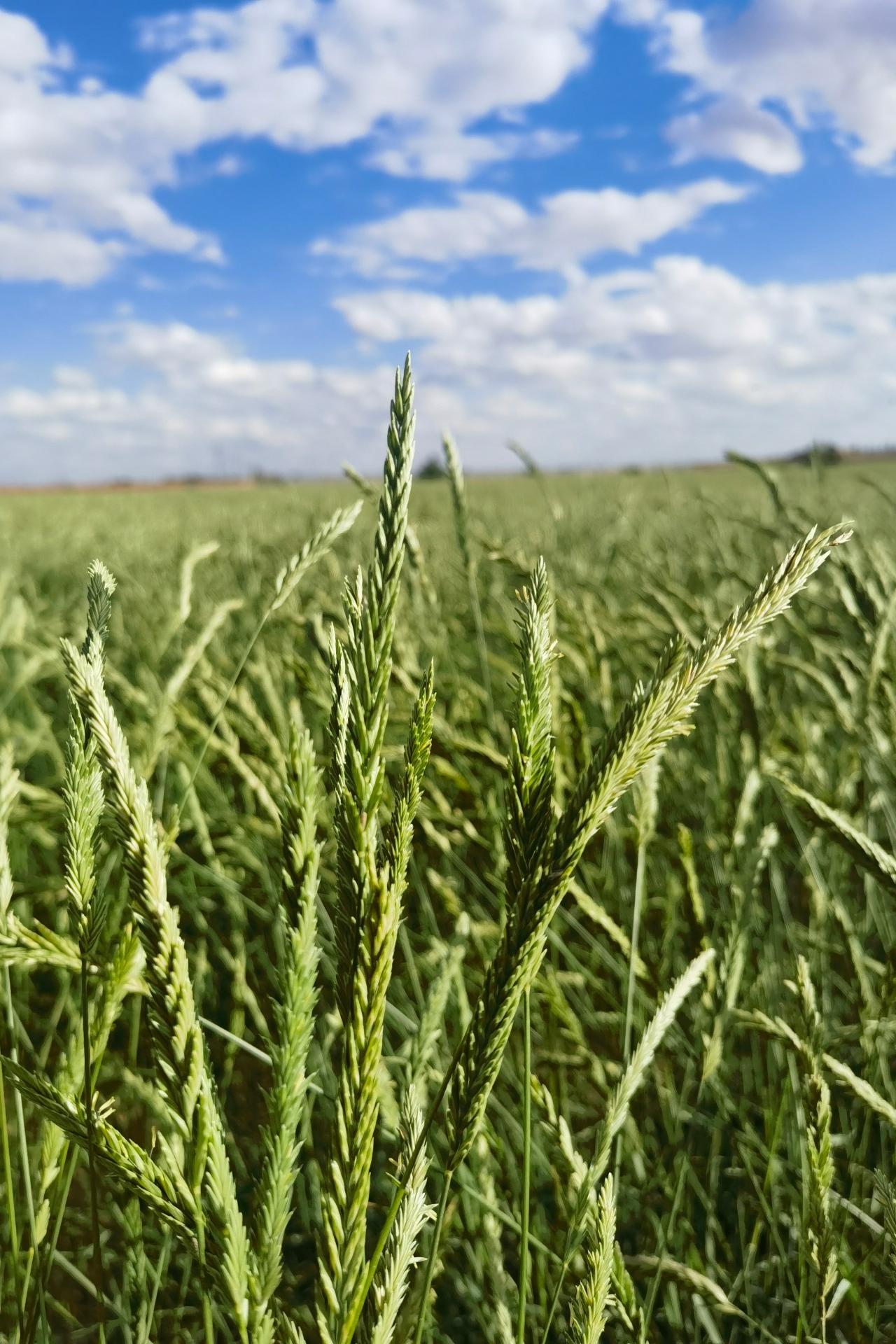
Leymus chinensis
Leymus chinensis, commonly known as sheepgrass, is a perennial rhizomatous grass (2n = 4x = 28, NsNsXmXm) within the tribe Triticeae, characterized by its downward and horizontally extending rhizomes. As a dominant species of the Eurasian Steppe, it is widely distributed across northern and northeastern China, Mongolia, Siberia, and the Korean Peninsula. The species exhibits remarkable adaptability to harsh conditions such as drought, saline-alkali stress, low nutrient availability, and freezing temperatures, traits facilitated by its extensive rhizome system. Valued for its high biomass yield, nutritional quality, and palatability, L. chinensis serves as a key species for grassland restoration, artificial pasture establishment, and sustainable livestock production.
More »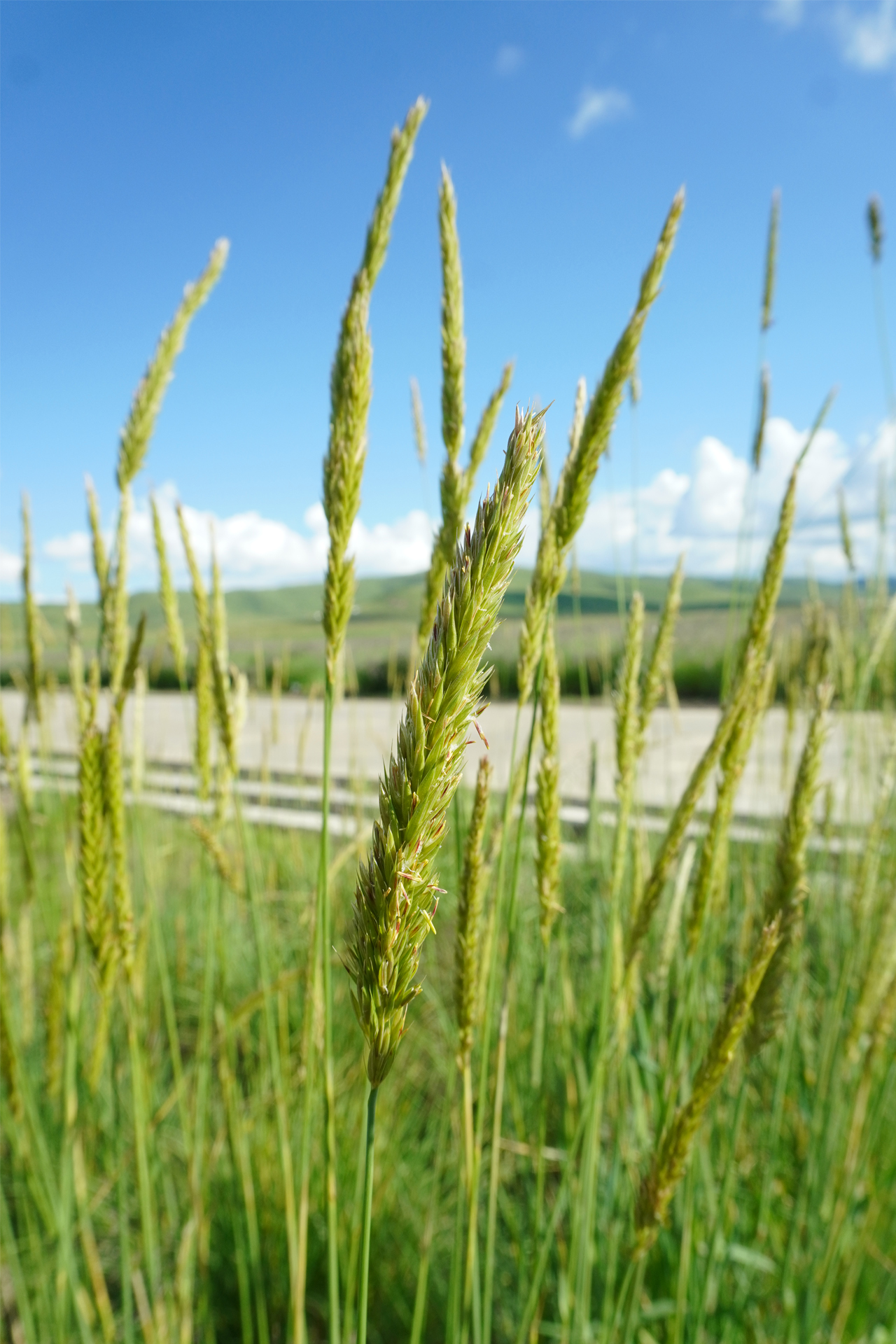
Leymus secalinus
Leymus secalinus is a perennial rhizomatous grass widely distributed across temperate regions of Eurasia. The species is characterized by its robust growth habit, dense spike-like inflorescences and extensive underground rhizome system. As an allopolyploid species, it exhibits excellent drought tolerance and adaptability to saline-alkaline soils. On the Qinghai-Tibetan Plateau (QTP), it has been successfully utilized in alpine grassland restoration projects, where its strong rhizomatous growth effectively stabilizes soils in degraded rangelands. Valued for both ecological restoration and forage production, L. secalinus plays an important role in soil conservation and pasture improvement. Its ability to maintain good forage quality under adverse growing conditions makes it a valuable species for sustainable grassland management in the QTP's ecologically vulnerable areas.
More »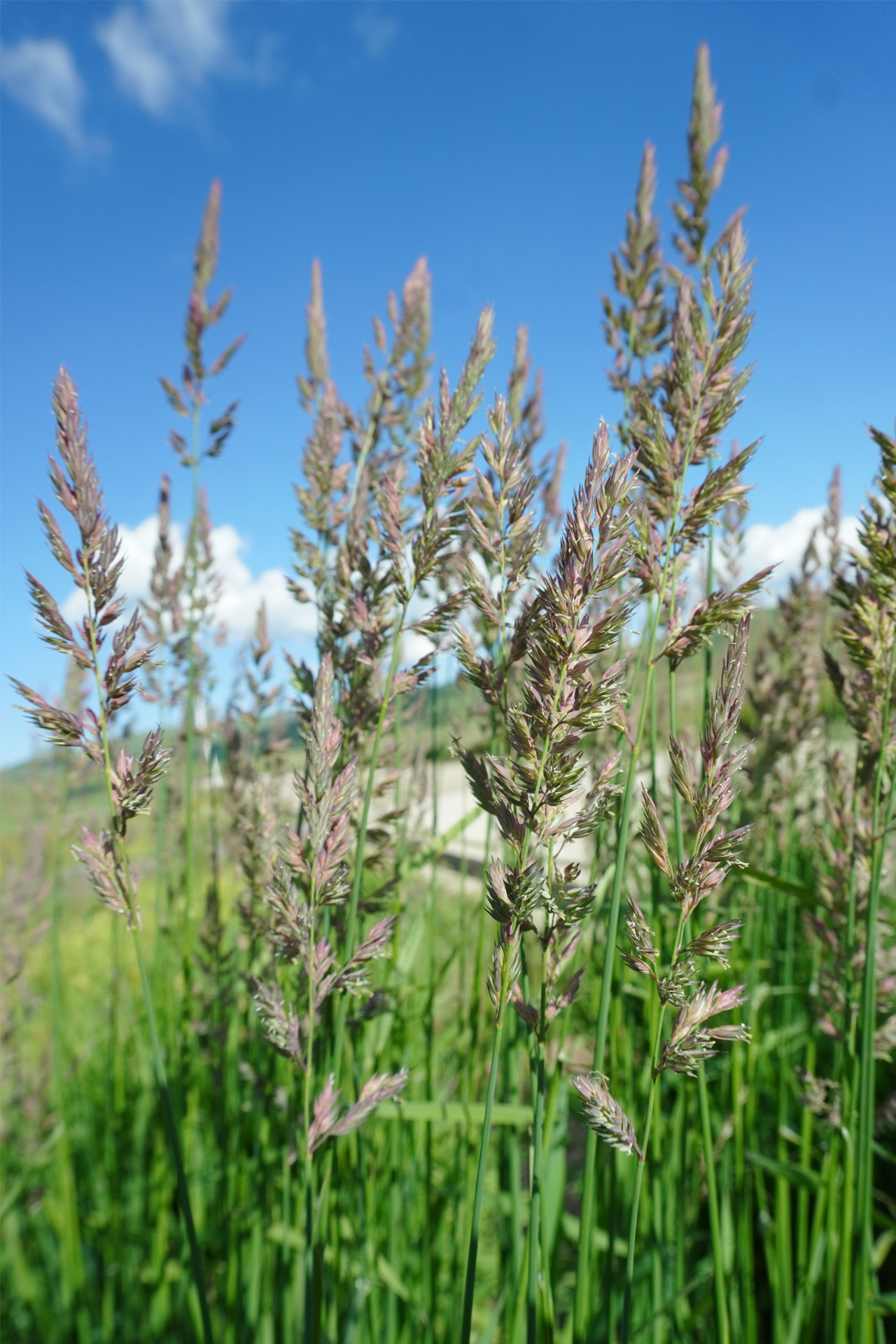
Phalaris arundinacea
Phalaris arundinacea (reed canarygrass) is a perennial cool-season grass species with a widespread distribution across temperate regions of North America, Europe and Asia. The species is characterized by its robust, creeping rhizome system and dense panicles that range from green to purplish in coloration. As a tetraploid species (2n = 4x = 28), it demonstrates remarkable adaptability to various environmental conditions, particularly waterlogged soils and fluctuating water tables. While valued for soil stabilization in wetland restoration and as a high-yielding forage crop, the species also exhibits invasive tendencies in certain ecosystems through its aggressive vegetative spread. These contrasting characteristics make P. arundinacea both a valuable agricultural resource and a species requiring careful management in natural wetland habitats.
More »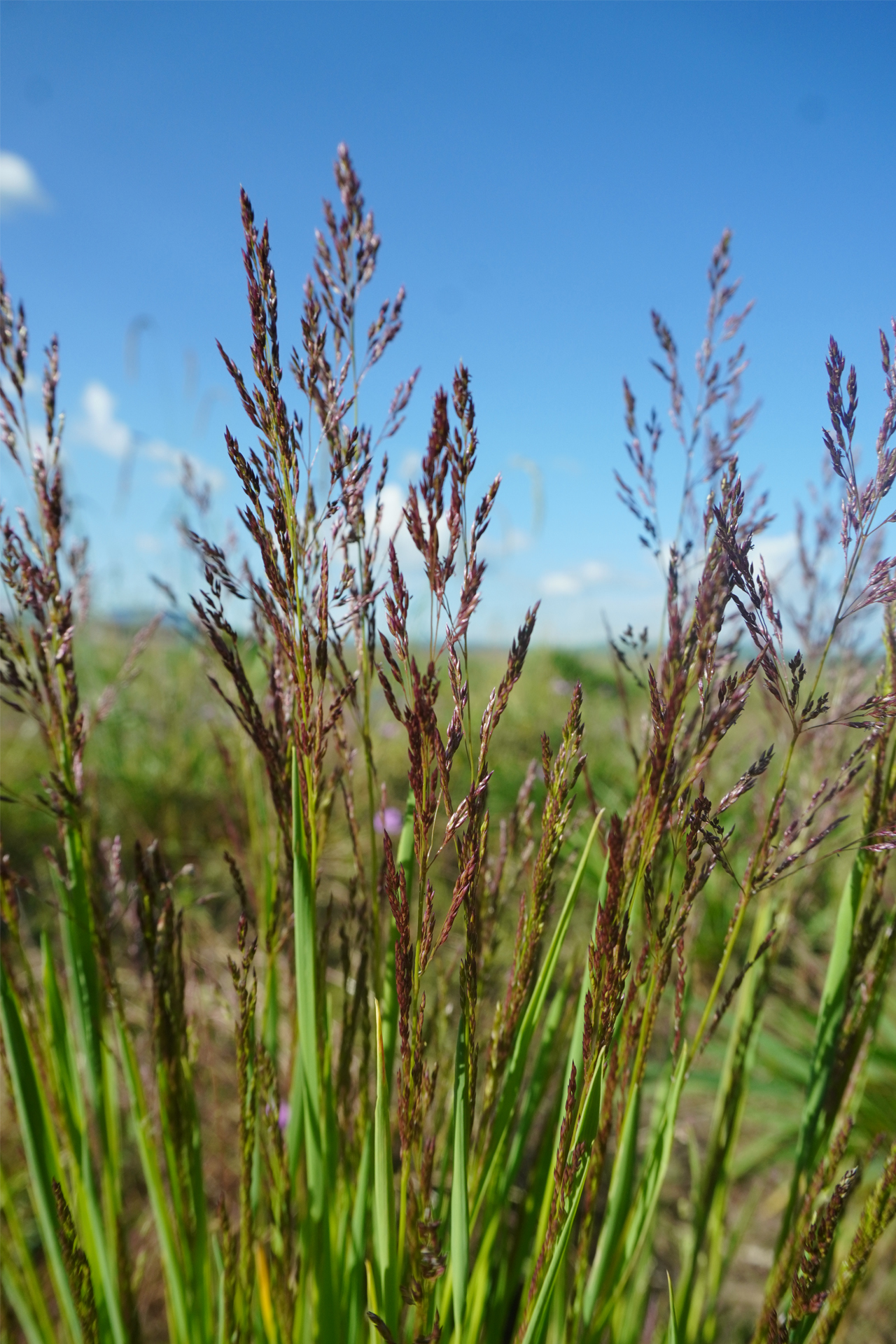
Poa pratensis
Poa pratensis (commonly known as Kentucky bluegrass or smooth meadow-grass) is a perennial cool-season grass widely distributed across temperate regions of Eurasia and North America, including the Qinghai-Tibetan Plateau. It commonly inhabits moist meadows, sandy soils, grassy slopes, and mountainous areas at elevations ranging from 500 to 4,000 meters. On the QTP, it serves as a valuable native forage species, forming dense sod through vigorous rhizomatous growth that helps stabilize soil and prevent erosion in alpine grassland ecosystems. The species exhibits strong cold tolerance and regrowth capacity after grazing, supporting its role in maintaining pasture productivity and ecological resilience in high-altitude pastoral systems.
More »
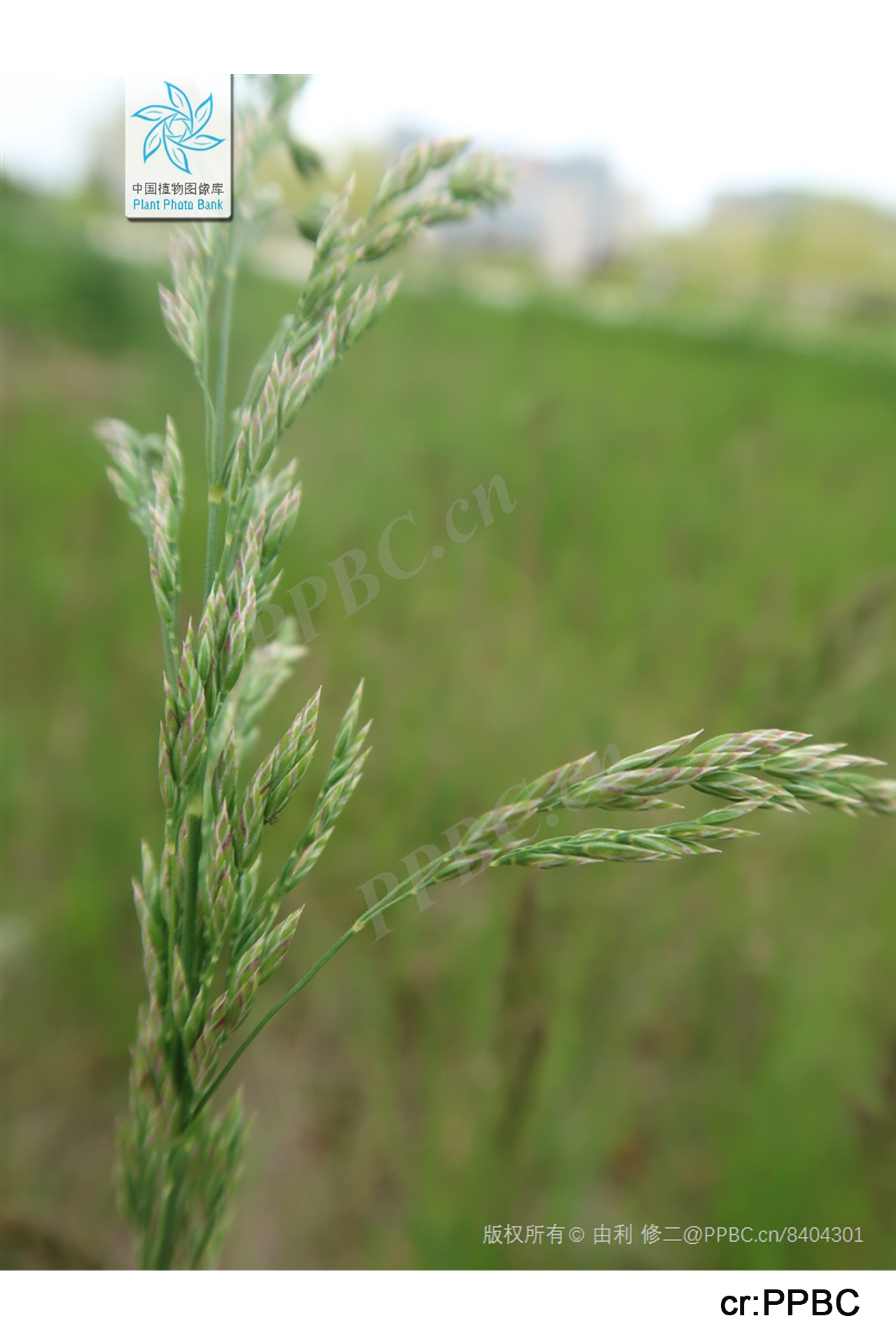
Poa trivialis
Poa trivialis (rough bluegrass) is a cool-season perennial grass widely distributed in temperate regions including the Qinghai-Tibetan Plateau (QTP), where it occurs in moist meadows, stream margins, and shaded slopes at elevations up to 4,000 meters. While considered a turfgrass in some systems, it also behaves as a weed in agricultural and natural alpine grasslands. In contrast to Poa pratensis—which forms dense, drought-tolerant sod through rhizomatous growth—P. trivialis spreads by stolons, prefers consistently moist and shaded habitats, and exhibits lower resilience to drought and high temperatures. On the QTP, the species contributes to soil water retention and ground cover in humid microhabitats, while also serving as a supplementary forage resource in mixed pastures, offering both ecological and modest economic value in high-altitude grazing systems.
More »
Pseudoroegneria libanotica
Pseudoroegneria libanotica is a perennial grass species native to the arid mountains and plateaus of West Asia, notably in Lebanon, Syria, and Turkey. It thrives in limestone-rich grasslands and shrubland margins at elevations of 1,000–2,500 meters, where it demonstrates exceptional drought tolerance. Ecologically, it functions as a wild forage resource while its robust root system aids in soil stabilization and erosion control. Owing to its strong adaptation to water-limited environments, Pse. libanotica is regarded as a valuable genetic reservoir for drought-resistance traits, holding potential for improving cultivated cereals in Poaceae breeding programs.
More »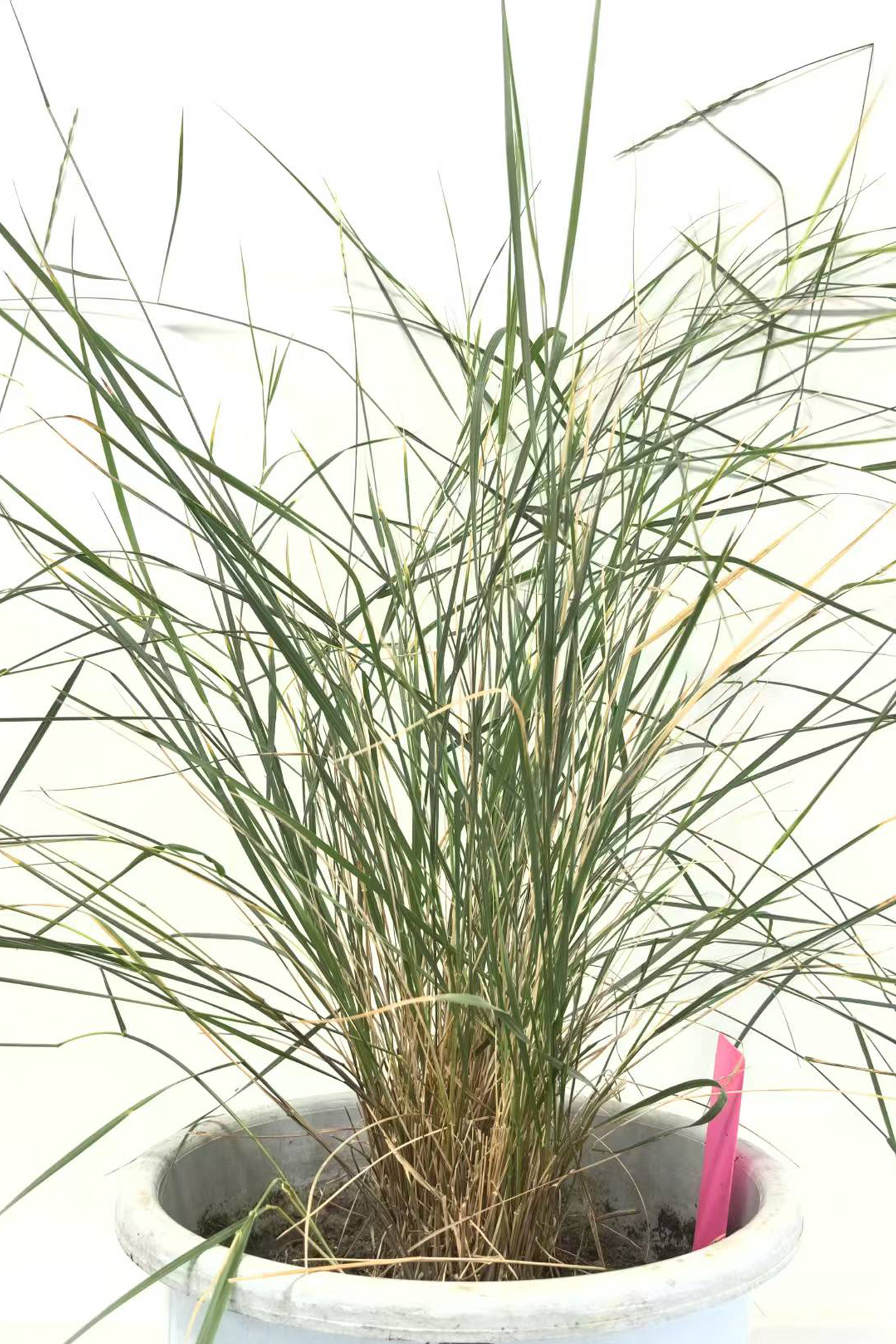
Roegneria kamoji
Roegneria kamoji is a perennial bunchgrass native to East Asia, including the Qinghai-Tibetan Plateau (QTP), where it is commonly found in grasslands, forest margins, and mountain slopes. The plant is characterized by its slender, nodding racemes and long-awned spikelets, which emerge in early summer. It typically grows in dense clumps with narrow, arching leaves, forming a fine-textured canopy. As a component of alpine and subalpine grassland communities, R. kamoji contributes to soil stabilization and habitat provision in high-altitude ecosystems. Its ecological value, combined with its resilient growth in well-drained soils under full sun to light shade, makes it a suitable species for revegetation and ecological restoration projects in the QTP region.
More »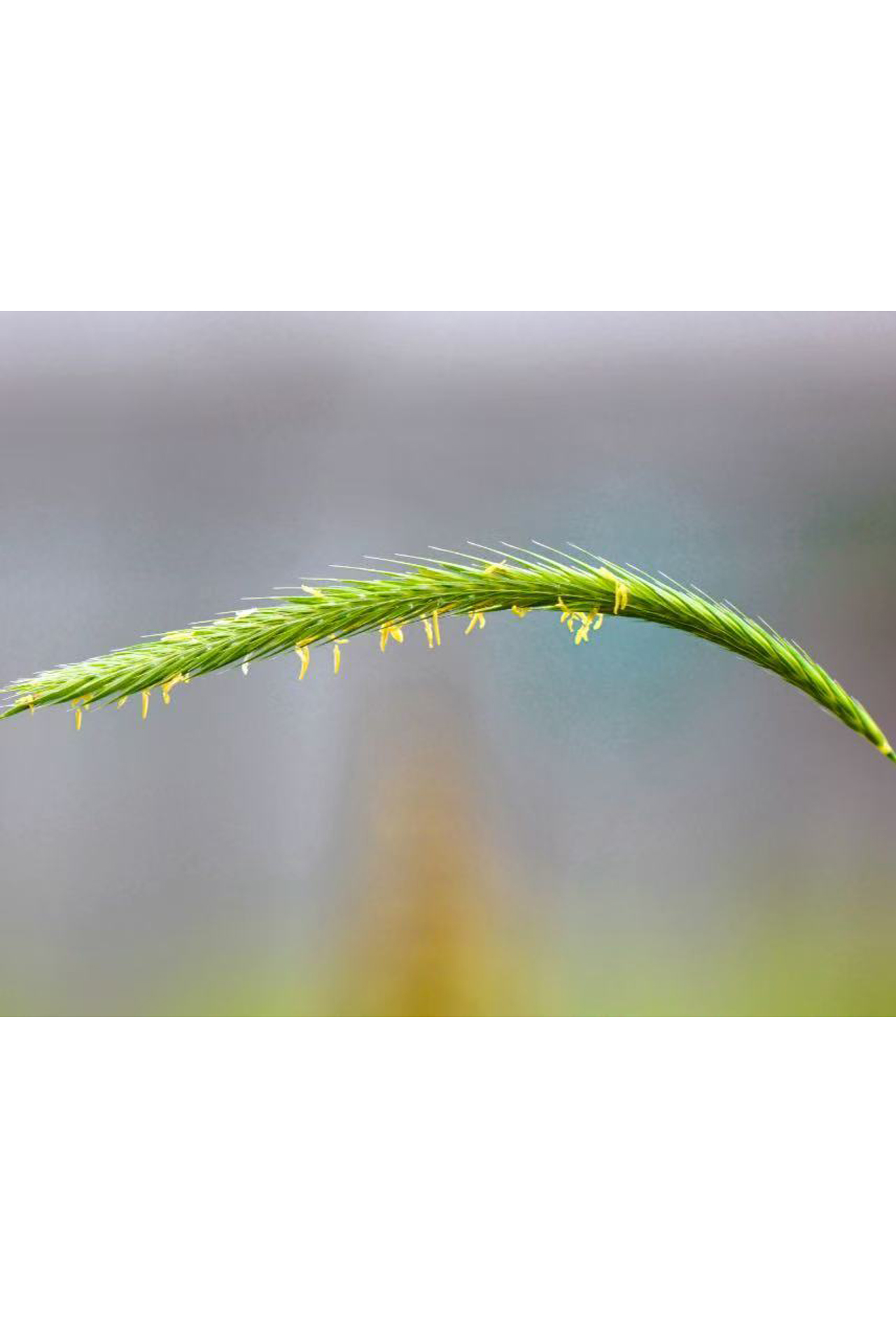
Secale cereale
Secale cereale (rye) is a hardy cereal grass (2n = 2x = 14, RR) native to Anatolia and adjacent regions. Thriving in cool temperate climates and low-fertility soils, it is characterized by a height of up to 2 meters, slender leaves, and dense spikelets. Rye is valued for its nutrient-rich grain, used in bread, whiskey, and feed, as well as for its stress resilience—including drought and cold tolerance—and soil-improving properties. Its deep root system also helps control erosion, further supporting its role in sustainable cropping systems. Notably, rye contains gluten but provides more dietary fiber and minerals than wheat.
More »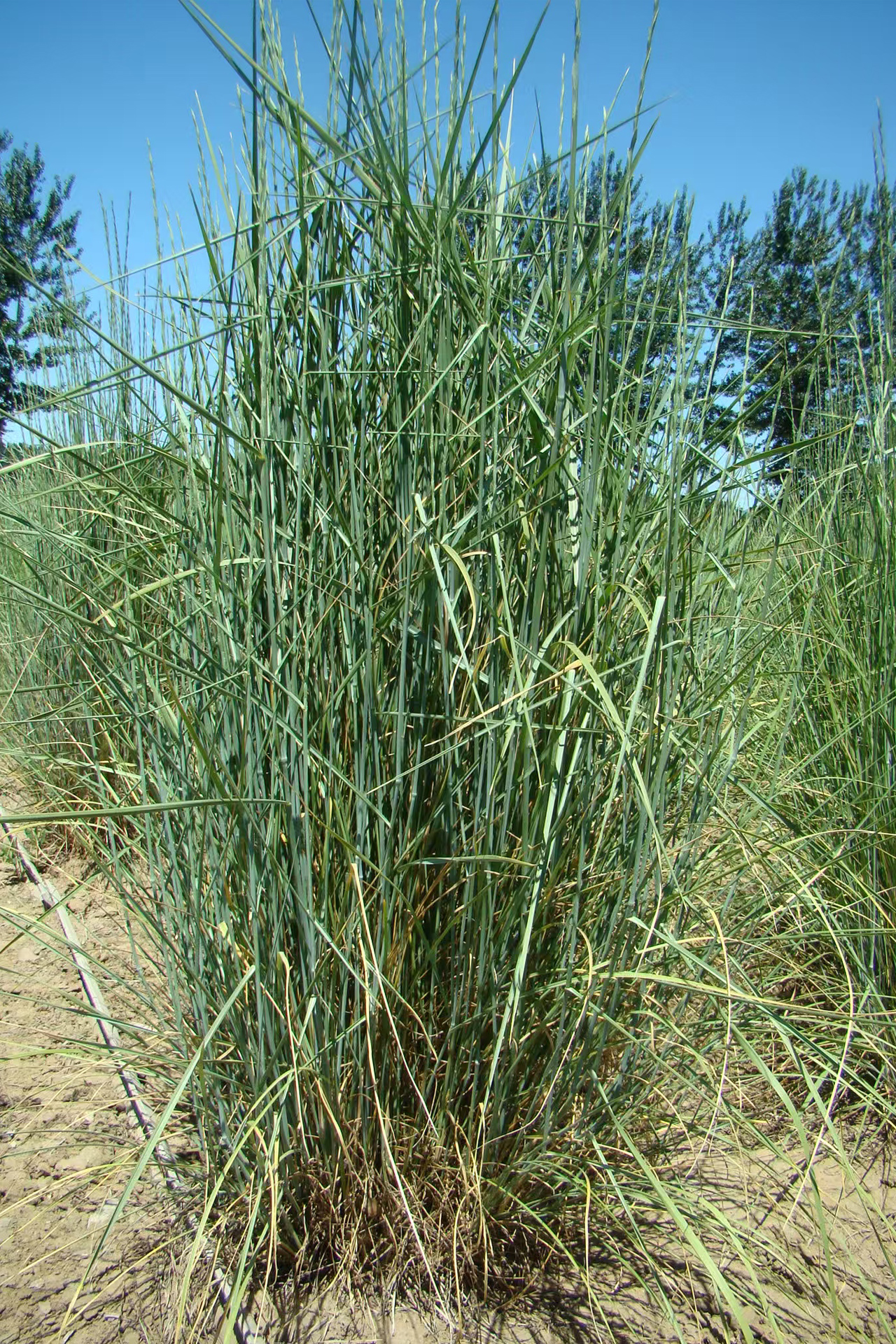
Thinopyrum elongatum
Thinopyrum elongatum is a perennial grass widely distributed across temperate regions of Eurasia and North America. This highly resilient species is noted for its exceptional tolerance to abiotic stresses such as drought, salinity, and cold. It exists in multiple ploidy forms—including diploid (2n = 2x = 14, EE), tetraploid, hexaploid, and decaploid accessions—and belongs to the genus Thinopyrum, which was segregated from Elytrigia in the late 20th century. Owing to its stress adaptability, Th. elongatum serves as a valuable genetic resource for cereal improvement and a promising forage grass for marginal lands.
More »
Thinopyrum intermedium
Thinopyrum intermedium is a perennial grass of the Poaceae family, valued for its strong drought tolerance, winter hardiness, and soil conservation capacity, making it an important forage species and a sustainable agricultural option for marginal lands. It is an allohexaploid (2n = 6x = 42) with the genomic constitution StStJJJsJs, which integrates stress-adaptive traits from different ancestral genomes. Compared to Th. elongatum, which is primarily used as a genetic donor for wheat improvement due to its well-defined E genome and disease resistance, Th. intermedium exhibits broader ecological adaptability and is more widely utilized as a perennial forage. This genetic architecture bridges wild and cultivated Triticeae species, enhancing its utility in cereal improvement and grassland restoration.
More »
Triticale
Triticale is a cereal crop developed through intergeneric hybridization between wheat (Triticum) and rye (Secale), combining the grain quality of wheat with the environmental resilience of rye. As an allohexaploid or octoploid (2n = 6x = 42 or 8x = 56), it exhibits high biomass yield, strong tolerance to acidic and low-fertility soils, and resistance to cold and drought. The plant produces dense spikes with larger kernels than rye and retains the vigorous growth habit characteristic of its parental species. On the Qinghai-Tibetan Plateau (QTP), triticale has been introduced as a high-yielding forage crop, providing reliable biomass under cold and nutrient-limited conditions to support local animal husbandry. Valued globally as a versatile forage and grain crop, triticale also serves as an important genetic bridge for transferring stress-adaptive traits into wheat, supporting breeding efforts aimed at enhancing cereal productivity under marginal growing conditions.
More »